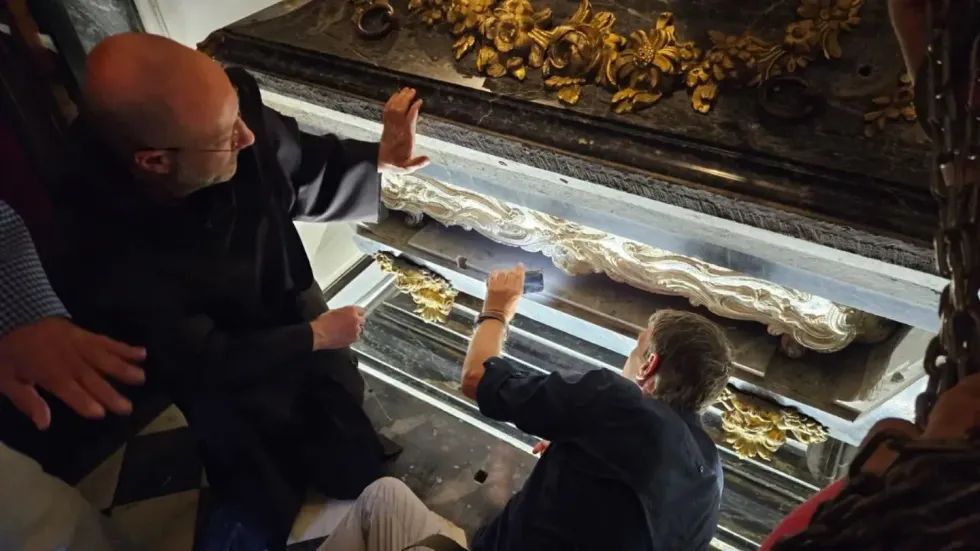The discovery of a 'perfectly preserved' saint who died 450 years ago has been hailed an archeological 'miracle'
The Order of Carmel in the Diocese of Avila
Her coffin was opened as part of a study into health conditions that plagued her life
Don't Miss
Most Read
Trending on GB News
The discovery of a "perfectly preserved" saint who died 450 years ago has been hailed an archeological "miracle".
Experts were shocked to find that Saint Teresa of Avila had not decayed after she was unearthed from a church in Spain.
Her coffin was opened as part of a study into health conditions that plagued her life.
A team of archaeologists compared the remains of St Teresa - who died in 1582 - to images when she was last exhumed in 1914 and found that her face was still "clearly visible" and remains were "incorrupt".
 The discovery of a 'perfectly preserved' saint who died 450 years ago has been hailed an archeological 'miracle'The Order of Carmel in the Diocese of Avila
The discovery of a 'perfectly preserved' saint who died 450 years ago has been hailed an archeological 'miracle'The Order of Carmel in the Diocese of AvilaChurch officials shared the news on social media, in a statement they said: "Her body is still incorrupt. Look for God's miracles".
Doctors said it was "difficult to make a comparison" between the body and photos taken of St Teresa's face and foot in 1914 because the images are in black and white.
The images of the saint from 1914 or last month have not been released but official say they plan to eventually share them.
Her body was exhumed by Marco Chiesa, the General Postulator of the Order, at the Diocese of Avila in Spain on August 28.
Chiesa said that "there is no colour, there is no skin colour, because the skin is mummified, but it can be seen, especially in the middle of the face.
LATEST DEVELOPMENTS:
"It can be seen well. The expert doctors can see Teresa's face almost clearly."
St Teresa is the patron saint of chess players, lace makers, loss of parents, people in need of grace, people in religious orders, people ridiculed for their piety, and those who are sick.
In 1970, the Spanish nun was the first woman to move to doctor of the church.
Researchers hope to determine how her body has still not deteriorated to help preserve relics in the future.
Doctors will also investigate a health condition called calcareous spines on her feet.

Her coffin was opened as part of a study into health conditions that plagued her life
The Order of Carmel in the Diocese of Avila
Calcareous spines are sharp bones recognisant of endoskeletons - which archaeologists say is sign of her religious commitment.
She also suffered from convulsions, stomach problems, dizziness and loss of consciousness.'
Chiesa added: "The Order sees fit to do this work and it will be the specialists who, after their exhaustive work, will give us conclusions.
"We know, from similar studies, that we will be able to learn data of great interest about Teresa and also recommendations for the conservation of the relics, but that will be at another stage."








